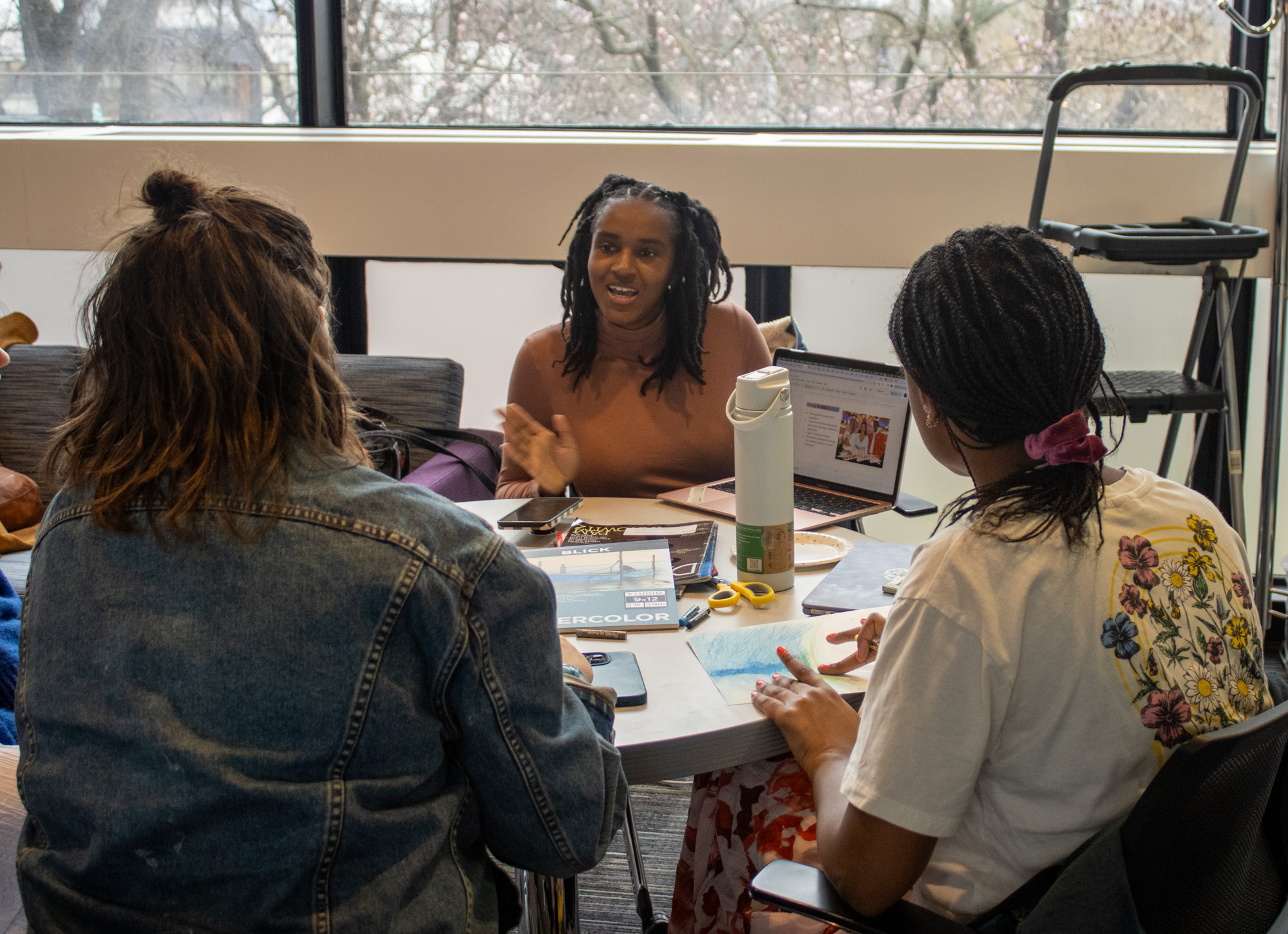With reproductive justice being an ongoing topic of political, social and cultural relevance, a new collaborative art series seeks to educate students while fostering an environment of artistic expression.
BU graduate students Charlene Browne and Kaitlyn Francke-Cooley founded “Curating the Body: Nurturing Voices for Reproductive Justice” to educate participants about reproductive health topics and the systems that affect them. The series’ first session, “Reproductive Justice and You,” took place on March 18, and the program will continue through the end of April.

“I really think that it’s important to show students that they have a voice and that they can use it,” said Browne, a master’s student in Metropolitan College and Extended Education. “They have the tools at their own disposal to be able to create the world that they want to see … having this form of artistic advocacy is an important space for students to get involved in.”
Sponsored by BU Arts Initiative, the program’s main focus is promoting agency over one’s body, a sentiment demonstrated in the very name of the series, said Francke-Cooley, a master’s student in the School of Social Work.
The series’ first two sessions welcomed various artists and speakers to share their work and knowledge surrounding reproductive justice. Following each discussion, students had the opportunity to hear from artists who specialize in creating reproductive justice art.
At “Curating the Body,” artists have used writing, music and visual art to showcase the theme of reproductive justice. Browne explained that the word “curating” in the series’ title is meant to welcome art of all mediums from all students, whether they enter the program to create art around the theme of reproductive justice or just for the sake of creating.
Jaedin Guldenstern, a senior in both the College of Fine Arts and College of Arts and Sciences, said that her interests in women’s studies and body activism motivated her to attend the series. For her, “Curating the Body” is a way to engage with a community of people who share similar passions for justice and art.
“Justice doesn’t happen individually or for one subset of people. Our freedom is all interconnected,” Guldenstern said. “These conversations allow interpersonal connections, but then also a worldwide reclamation of the body.”

Guldenstern said she appreciates how the series provides a public space for education and expression, free from judgment.
“People being able to show their art, regardless of what background they have, is something that is a really precious resource,” she said.
The series will culminate in a final showcase on April 29 at the LGBTQIA+ Student Resource Center. Students will have the opportunity to display or perform their artwork and what they have learned about reproductive justice throughout the series in what Sengor described as a “positive and empowering space.”
“It takes a lot of bravery to show your art or art that you love,” said Martha Sengor, a senior in CAS and a member of the BU Arts Initiative Student Advisory Council. “I think that also makes it a really vulnerable space.”
Sengor hopes the showcase will attract new participants and inspire observers to participate so the art series can continue next year — the more people involved, the better, she said.
Ultimately, Guldenstern said that “Curating the Body” promotes artistic advocacy among students, which encourages them to pursue activism beyond what they read in textbooks.
“I don’t think you need to make direct art about activism,” Guldenstern said. “I think the act of doing it and then showing it to the world is a form of activism.”





















































































































